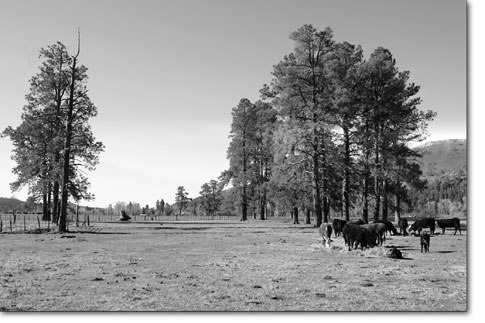| ||
| Family farming fades away Agriculture takes hard hit in La Plata County SideStory: Starting in the southwest: County explores agricultural preservation and enhancement
by Will Sands Large pieces of the local landscape are vanishing. Mirroring a statewide trend, La Plata County is losing startling amounts of agricultural acreage. A new report, released by Environment Colorado Research and Policy Center, analyzes the amount of agricultural land loss throughout Colorado. It also examines the environmental and economic impacts of trading cows for condos. More than 1.26 million acres of agricultural land in Colorado have become subdivisions in the last 10 years. “Colorado is losing the equivalent of five family farms every week,” explained Pam Kiely, Environment Colorado’s land use associate and author of the report. Kiely added that more than half the state’s acreage is in peril of going from family farm to housing tract and the impacts will be far reaching. “We recognize the fact that more than 50 percent of our state’s lands are still in agriculture,” she said. “They’re some of our most important open space and what people identify Colorado with. Keeping those lands open is crucial to the state’s vitality both economically and environmentally. There are a whole host of people in the state who have a stake in this.” Spotlighting La Plata County, the report reveals that more than 50,000 acres of local farms and ranches have been transformed into lots and housing since 1987. Durango wool grower Jim Dyer put the number in perspective, saying, “That’s somewhere in the neighborhood of 10 percent of La Plata County’s land.” Dyer is also at the forefront of the Southwest Marketing Network, a group founded on the mission of expanding markets for small-scale, alternative and minority farmers and growers in the region. With changing times, locally produced agriculture is becoming more and more essential to the local community, he explained. “Agricultural land is no luxury,” Dyer said. “With rising energy costs, the obesity crisis demanding more fresh, wholesome food, and consumers increasingly placing value on knowing where their food comes from, we all need farms and ranches – not in some distant land – but in our own back yards.” Dyer and Kiely agreed that a first step is bridging the divide between two traditionally disparate groups – conservationists and farmers. Shortly after the report was released, the Rocky Mountain Farmers Union embraced the findings and joined in the search for answers. “One third of Colorado counties are dependent on agricultural income and employment,” said John Stencel, the union’s president. “The loss of prime farmlands should concern everyone.” Now, Environment Colorado is calling on all the other stakeholders to enter the discussion. Faced with the reality of losing Colorado’s agricultural heritage, citizens should start coming to the table, Kiely argued. “Our main goal is getting as many people to the table as is possible, and then we can begin talking about solutions,” she said. “The question is, ‘How can we actually make agriculture come back as a productive and prosperous industry in Colorado?’” The easy answer is that money needs to be pushed back into the sagging industry. “Agriculture is having a hard time, and part of that deals with the rising costs of the land,” Dyer noted. “Why shouldn’t the locals and tourists who reap the side-benefits not be lending a hand?” Kiely concurred, saying, “Those of us who like looking at rolling ranchlands out of our windows should have to pay for it at some point.” La Plata County is already a little ahead of the curve, according to Dyer. Local residents are beginning to recognize the value of eating locally grown foods and buying locally produced goods. However, much more ground needs to be covered in order for local agriculture to become viable, he commented. “The Durango Farmers Market is booming, we’re doing a Community Food Assessment, and there’s a lot of interest in the Farm-to-School push,” Dyer said. “We are making progress here. The question is, ‘Are we making it quickly enough?’” His response was a strong “no.” The vast majority of La Plata County residents still consume food and agricultural goods that have been trucked in from the far corners of the country and world, according to Dyer. Meanwhile, local cattle are often trucked hundreds of miles away to feedlots and processing facilities. “There’s no simple answer, but we seem to be neglecting local production of food for local people,” Dyer said. “We spend more than $100 million a year on food in La Plata County. Even 10 percent of that would be a lot of product.” Dyer and Kiely agreed that a great deal is at stake in La Plata County and Colorado as a whole. Without greater local commitment, the heritage of farming and ranching will simply go away. “People want the aesthetics, biodiversity, economic benefits and open space of agriculture,” Dyer concluded. “It’s important that they start to support it financially.” •
|


